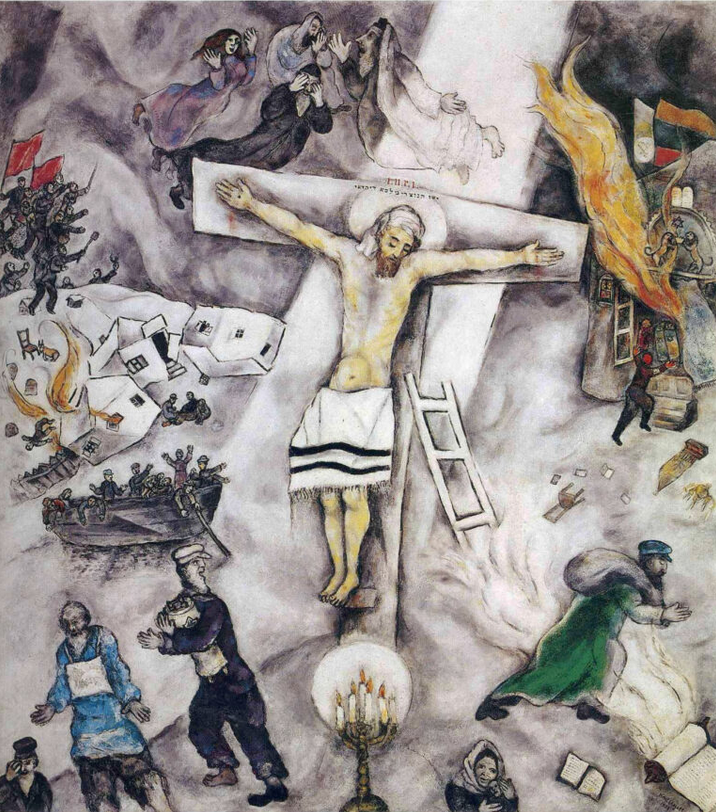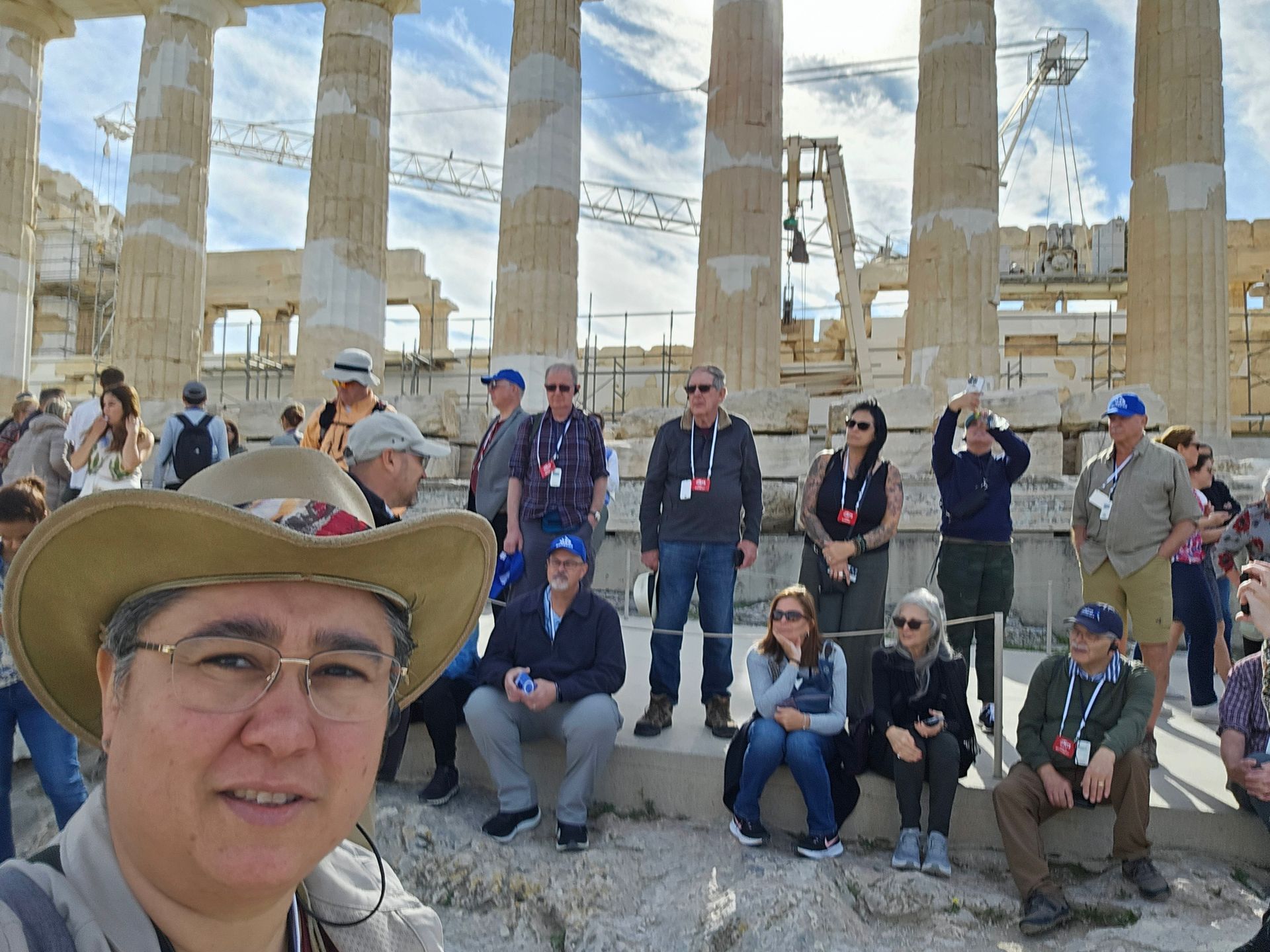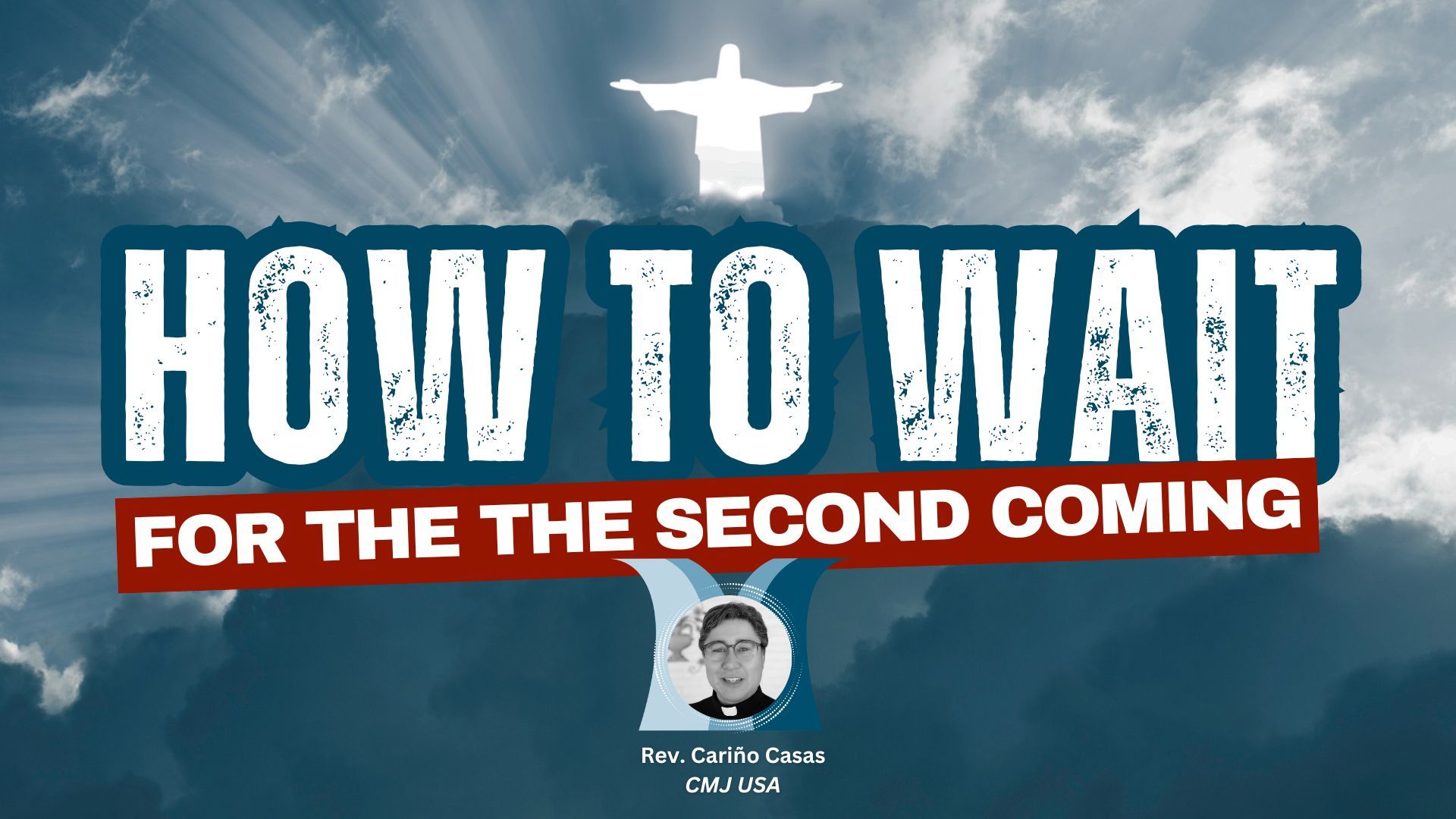Called to be Suffering Servants
By Rev. Cariño Casas
Executive Director
Holy Cross Eve – Resurrection Anglican Fellowship – Denver, Colorado
Isaiah 45:21-25
Psalm 98
Philippians 2:5-11
John 12:31-36a
Friends, it is an honor and privilege to bring the Word to you, diocese representatives and leaders of Christian agencies. There was a temptation to write a peppy, rah-rah sermon to start off this gathering. But it is Holy Cross Eve, and John 12 bids us slow down and meditate on hard words, words all of us here know. Words that I certainly need to be reminded of regularly.
It all gave me pause. Lord, do you really want me to preach on THIS? Then an earthquake killed thousands in Morocco. And I read about the Christians imprisoned in Eritrea. Many of you are intimately aware of the on-going attacks on Christians in Pakistan. Those are so bad that they are being reported by NPR and CNN , not just Voice of the Martyrs and Christian media.
Closer to home, I am walking with a dear daughter of the King who has been diagnosed with advanced colon cancer. That already had me pondering the suffering of Messiah and his call for us to follow his cruciform life.
I grew up in a church full of disaffected Catholics. Iconography was looked down upon. As a younger Christian, I made all the arguments against icons and crucifixes. Then I lived a little more life. I met more Christians from different traditions. I lived in Jerusalem, where our Eastern Orthodox siblings in Christ taught me that icons are windows into heaven, a glimpse at the great cloud of witnesses cheering us. So now, I MAY have some icons in my room: John the Beloved draped over Jesus’ shoulders, Mary Magdalene encountering the Risen Christ, Jesus seated on the throne surrounded by angels and elders calling the faithful up to himself.
Still, a crucifix depicting Jesus bleeding and dying… that’s not necessary. He’s resurrected. He’s not on that cross anymore. Give me the risen Christ!
My best friend was recently diagnosed with colon cancer. The situation appears quite grave. As I prayed for her one night, I scanned my room. In this moment, I needed to look on the one whom we have pierced. I needed to see Messiah broken for us. I needed to see the stripes that heal us. I needed to see that holy cross – not any cross – the violent cross on which my savior died. I needed to see that, yes, Messiah suffers with us.
So let us look at John 12 tonight and see what the Cross of Christ says to us and to the nations that are on all of our hearts.
First, we’ll set the scene. Passover is approaching. Jesus has raised Lazarus from the dead. This has both supporters and haters whipped into a frenzy. Then Jesus purposely fulfills the prophecy of Zechariah 9:9 – “Behold, your king is coming, sitting on a donkey’s colt!” – to signal most publicly that he is indeed the awaited Messiah, the Son of God. This was David’s title, Son of God, as we see in Psalm 2 , the coronation song.

So as Jesus ministers to the crowds in Jerusalem, the Son of David, Son of God is on the people’s brains.
In John 12:23 , Jesus says,
23 “The hour has come for the Son of Man to be glorified. 24 Truly, truly, I say to you, unless a grain of wheat falls into the earth and dies, it remains alone; but if it dies, it bears much fruit. 25 Whoever loves his life loses it, and whoever hates his life in this world will keep it for eternal life.”
Son of David, Son of God, Son of Man. I can see the crowds trying to process all these Son titles. “What is he talking about?” they may be asking each other.
Jesus interrupts their thoughts.
Now is the judgment of this world; now will the ruler of this world be cast out. And I, when I am lifted up from the earth, will draw all people to myself.
Have I confused you with all the background info? Good! That way we’re in the same place the crowd is with Jesus.
Tonight’s Gospel passage begins, “Now is the judgment of this world.” Judgment… the examination, the decision, the tribunal of the world. One commentator says “the revelation of the true state of affairs” that will cause “a division among humanity.”[1] Already the crowds are divided about who Jesus is.
In John 1 , we read that in Jesus is life, “and the life was the light of men” ( John 1:4 ). The life that Jesus carries, that same life that spoke the universe into being, is what gives light to our dark human existence. But maybe our dark human existence doesn’t want to be exposed.
In John 3 , in his conversation with Nicodemus, Jesus tells us what the judgment is.
19 And this is the judgment: the light has come into the world, and people loved the darkness rather than the light because their works were evil. 20 For everyone who does wicked things hates the light and does not come to the light, lest his works should be exposed.
The glaring light of Jesus’ perfect life exposes the selfishness of our hearts. We have two choices: We let the light show how really self-centered we are or we run from the light and hide.
We love the darkness because there we are self-satisfied, self-righteous. I’m OK. I give to a charity now and then. Maybe I even serve said charity. I help little old ladies cross the street. I’m a perfectly good human being.
Then Jesus comes, and he talks to outcasts. He touches lepers and stops to help a wounded enemy. He happily pays his taxes, with the help of a fish. What a mensch! Gosh, he makes us all look bad.
Do we run away or do we say, “I’d like to be like him when I grow up”?
“Now will the ruler of this world be cast out.” Early Jewish sources show that when Jesus’ audience heard “ruler of this world,” they understood this to be Satan, “the prince of injustice.”[2] This is our oldest enemy, the deceitful Serpent in the Garden who told our first parents – Adam and Eve – that they could be self-sufficient and all knowing, that they didn’t need God’s help to live good, productive lives.
With the revealing of the deceitful and desperately sick state of our human hearts ( Jer 17:9 ) comes also the reckoning for the evil one who tortured Job’s body and soul, the snake who plants seeds of doubt about our loving Creator God in our hearts and minds.
“And I, when I am lifted up from the earth, will draw all people to myself.” OK, Jesus, what are you on about?
I’m going to admit to you that the phrase “lifted up” has been cryptic to me for many years. We see it also in Jesus’ conversation with Nicodemus. There Jesus references an obscure Bible story about an icon of a snake. “And as Moses lifted up the serpent in the wilderness, so must the Son of Man be lifted up, that whoever believes in him may have eternal life.”
If you’ve watched The Chosen, the John 3 conversation was very well acted out by Jonathan Roumie as Jesus and Erick Avari as Nicodemus. The look of confusion on Nicodemus’ face mirrored the questions in my mind.
Lifted up… that is one word in Greek. Where else do we see this word?[3] In Isaiah 52:13 in Israel’s Greek translation of the Prophets.
13 Behold, my servant shall act wisely; he shall be high and lifted up, and shall be exalted [or glorified].
I still don’t get it Jesus. Continuing to verses 14 and 15:
14 As many were astonished at you— his appearance was so marred, beyond human semblance, and his form beyond that of the children of mankind— 15 so shall he sprinkle many nations.
So, this Servant of God in Isaiah 52 and 53 will suffer some severe trauma. He will be unrecognizable as a human being.
“So shall he sprinkle many nations.” In the Bible, both sprinkled water and blood speak of cleansing. Water cleanses from the impurity of death. Blood cleanses us from the defilement of sin (cf. Isaiah 53:10 ).
Through suffering, this Servant cleanses the nations from death and sin. Through this cleansing, Jesus “will draw all humanity to himself.”
This word “draw” has the sense of dragging. John Chrysostom says, “‘[Jesus] will draw them’ as though they were detained by a tyrant and unable to escape the hands of him who keeps hold of them.”[4] In other words, Jesus will drag mankind from the grip of Satan, who has long tried to keep his clutches on us. Jesus wrests those who trust in him from Satan’s grasp.
OK, let’s recap a bit before we go on. Jesus declared himself King of Israel by riding on a donkey into Jerusalem. But then he starts talking about a coming judgment – not of the enemies of Israel, but of Satan and the whole world. Then he says he must be “lifted up.” He is referencing the Suffering Servant of Isaish 52 and 53 who dies on behalf of Israel and the nations. The Servant’s death is an atoning sacrifice that washes the nations clean of sin and death.
Well, where I had questions about what “lifted up” means, the crowd in John 12 seems to understand.
34 So the crowd answered him, “We have heard from the Law that the Christ remains forever. How can you say that the Son of Man must be lifted up? Who is this Son of Man?”
From their question, we can see that they understand “lifted up” as some sort of death.
What they don’t understand is who the Son of Man is. I do not think the crowd is being deceitful, as John Chrysostom says. The crowd is confused. Remember, earlier, we said that Jesus declares himself the Son of God, that is the earthly King of Israel, at the triumphal entry. Now Jesus said the Son of Man must be glorified, must be lifted up. Perhaps the crowd recognizes the Suffering Servant language of Isaiah 52-53. Or perhaps they are just clicking on what Jesus said earlier about a seed needing to die, the seed being the Son of Man.
I’ve heard Christian teachers and preachers say that Son of Man speaks of Jesus’ humanity and Son of God speaks of his divinity. In the Jewish mind, they are the other way around. Son of Man is the divine figure from Daniel 7. There, the Son of Man is seen sitting at the right hand of the Ancient of Days; he comes in the clouds, and is given dominion over all the earth.
In his book The Jewish Gospels , Jewish scholar Daniel Boyarin explains that sometime in the Second Temple Period, the expectation for the Son of God who would take David’s earthly throne was combined with the vision of the divine Son of Man of Daniel 7. There were among the Jews of Jesus’ day those expecting a supernatural/eternal/divine Messiah. And perhaps that’s what we’re hearing in this crowd. They say, We know from the Scriptures that Messiah lives forever. So how can Messiah die? Who is this Son of Man?
Jesus turns the tables on them. He keeps using this heavenly, even eternal, title for himself but he keeps talking about death. It does not compute. Yes, Jesus had recently raised Lazarus from the dead. Perhaps this had many asking, Could this be the Divine Messiah? But they don’t expect a resurrected Messiah. There were many self-proclaimed messiahs that died in Israel. None of them got up again.
Passover, and Jesus’ lifting up, is approaching quickly. Jesus doesn’t have time for deep exegesis from Daniel 7 (or Daniel 9 , which says Messiah will be cut off).
35 So Jesus said to them, “The light is among you for a little while longer. Walk while you have the light, lest darkness overtake you. The one who walks in the darkness does not know where he is going. 36 While you have the light, believe in the light, that you may become sons of light.”
Friends, these are the hardest words of all.
Jesus is in a sense resaying what he said earlier in the chapter:
24 Truly, truly, I say to you, unless a grain of wheat falls into the earth and dies, it remains alone; but if it dies, it bears much fruit. 25 Whoever loves his life loses it, and whoever hates his life in this world will keep it for eternal life. 26 If anyone serves me, he must follow me; and where I am, there will my servant be also.
Luke is much clearer and more succinct: “If anyone would come after me, let him deny himself and take up his cross daily and follow me” ( Luke 9:23 ).
The Romans made the condemned carry their own cross, as we see in the Passion narrative. It communicated that there was no way out. The modern idiom of such a condemned person is “dead man walking.”
Jesus is saying, Come walk death row with me. That is how we reap a harvest in this world. It is the way to eternal life. It is how you become like me.
Walk while you have the light, lest darkness overtake you. The one who walks in the darkness does not know where he is going. While you have the light, believe in the light, that you may become sons of light.
The light of Christ is either revelation or judgment to each of our souls. Jesus’ invitation to walk in the light is a call to discipleship. We stay in the light if we follow him. The stumbling block for so many is that staying in his light is following him to the cross, to martyrdom.
But when we follow Jesus’ light – as if we are chasing the sun – we become sons of light. We become lights in the world, as Jesus called us to be. ““You are the light of the world. … let your light shine before others, so that they may see your good works and give glory to your Father who is in heaven” ( Matt 5:14-16 ).
I’ll close with one more thought on the Suffering Servant passage of Isaiah 52-53. There is an argument between present-day Judaism and Christianity on who the Suffering Servant is. Until the 11 th century, many Jewish sages saw the Messiah in Isaiah 53.[5] But Rashi, who died in 1105, said the Suffering Servant is the people of Israel. Despite the opposition of many rabbis in Rashi’s day, Rashi’s interpretation superseded the ancient commentaries and persists today among our Jewish neighbors.
For those whose eyes have been opened, it is very obvious that Jesus is the fulfillment of Isaiah 53. And so, it is easy to get into a heated debate with someone whose eyes have not been opened. If we allow that to happen, we stray into the arrogance Paul warns us against in Romans 11.
So, I’ve been pondering on how to internalize the message of Isaiah 53 so as to communicate it in a way that isn’t antagonistic or haughty.

I’ve been helped along by the painting White Crucifixion by Marc Chagall. It depicts a shtetl, an eastern European Jewish village, under attack. The synagogue is in flames. People are running to-and-fro holding things of value – a baby, a Torah scroll, some other treasured or essential possessions – as they flee for their lives. Ancestors watch from above, lamenting, covering their eyes. In the middle of the frame is Jesus crucified, a prayer shawl around his waist.
Chagall sees Jesus as the ultimate Jewish martyr. The painting expresses well Jesus’ role as the Suffering Servant who not only suffers on behalf of his people but who suffers with them.
If Jesus is calling us to follow him to the cross, then he is calling us not just to suffer with him but to suffer with the suffering around us. We must be the Suffering Servant to our beloved people groups.
For me, that call is to somehow step into the suffering of antisemitism with our Jewish neighbors. For others, it will be to suffer with the people of Morocco as they dig out their dead from the rubble. Still others are sneaking into Pakistan, Sudan, Eritrea, Nigeria, China to suffer with the oppressed and persecuted in those countries. Some of you are called to sit with the homeless, to lament the unborn, to minister to the addicted, the sick, the imprisoned, and the dying. The poor we have with us always.
We are called to be suffering servants like our Master as we preach Christ crucified. Unless seeds fall to the ground, there is no fruit, there is no harvest. Unless we walk in the light of the cross, we cannot be lights to the dark world around us.
Everything we’ve pondered is encapsulated in today’s collect. So we’ll close with that:
Let us pray.
El Shaddai, whose Son our Savior Yeshua HaMashiach was lifted high upon the cross that he might draw the whole world to himself: Mercifully grant that we, who glory in the mystery of our redemption, may have grace to take up our cross and follow him; who lives and reigns with you and the Ruach HaKodesh, Elohim echad, in glory everlasting. Amen.
Footnotes
[1] Rodney A. Whitacre, John. Vol. 4 of The IVP New Testament Commentary Series, (Westmont, IL: IVP Academic, 1999).
[2] Hermann L. Strack and Paul Billerbeck, ed. and trans. Jacob N. Cerone , A Commentary on the New Testament from the Talmud & Midrash Vol. 2, (Bellingham, WA: Lexham Press, 2022), 634.
[3] There is another interesting reference to “lifted up” in the Septuagint. It’s in Genesis 7. That’s the middle of the Flood narrative. Verse 17, “The waters increased and bore up the ark, and it rose high above the earth.” The ark was lifted up from the earth. Jesus must be lifted up from the earth.
In that generation, God also decreed a judgment of the world. Humanity was far from God, abusing creation and doing what was right in their own eyes. The world needed a cleansing. A flood would wash all creation clean. This didn’t need to mean death for all humanity. God had Noah make an ark. All humanity was invited to turn from their selfish ways and find salvation in God’s ark. The animals heard God’s call. They were drawn to the giant ship. Noah and his family also felt the draw and were saved.
Jesus is the Ark – lifted high above the earth – who shelters us from the coming judgment of Satan and those who would follow their own selfish desires.
[4] John Chrysostom, “Homilies of St. John Chrysostom, Archbishop of Constantinople, on the Gospel of St. John,” in Saint Chrysostom: Homilies on the Gospel of St. John and Epistle to the Hebrews , ed. Philip Schaff, trans. G. T. Stupart, vol. 14 of A Select Library of the Nicene and Post-Nicene Fathers of the Christian Church, First Series (New York: Christian Literature Company, 1889), 250.
[5] “ Isaiah 53 – the Forbidden Chapter. A Commentary.” ONE FOR ISRAEL Ministry , 1 October 2017. https://www.oneforisrael.org/bible-based-teaching-from-israel/inescapable-truth-isaiah-53/.
Blessed by this post? Ready to sow into the work of CMJ? No gift is too small. we are blessed by your partnership.



